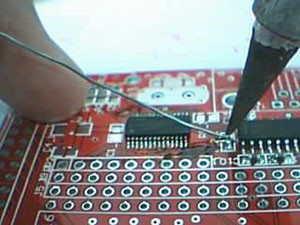The solderability of components is actually tin plating on the component leads after cleaning. Tin plating is a very important process in manual soldering operations. Treatment can improve the reliability and speed of welding and reduce the occurrence of welding defects.

The surface cleaning methods for different components are different, so be careful before tin plating. When tin plating, the surface of the component leads should be close to the melting temperature of the solder, not too low or too high, too low solder plating effect is not good, too high is easy to damage electronic components. In addition, effective soldering flux should be used in the tin plating process. Generally, solder with a rosin core is selected when tin plating is performed with solder wire.
For small batch production, tin plating can no longer be tinned one by one. You can choose to use tin pot for tin plating. It should be noted that the proper temperature of the solder should be maintained, not too high or too low, otherwise it will melt. The solder surface will soon be oxidized. For tin plating of multi-strand wires, it is necessary to pay attention to the inner layer wires when stripping the outer insulation of the wires during the tin plating process, and then twist the multi-strand wires together well. There is no room for solder to leave the inside of the insulating layer. It is better to leave a gap of 1 to 3 mm from the end of the insulating cover. This is not only helpful for checking whether the wire has broken strands, but also convenient for the wire to pass through the tube. When tin plating, first dip the component leads into a rosin alcohol solution, then press the hot soldering iron with tin on the leads, and rotate the leads to evenly coat the leads with a thin layer of tin, if it is a multi-strand metal Wire conductors should be twisted together first, and then tinned.